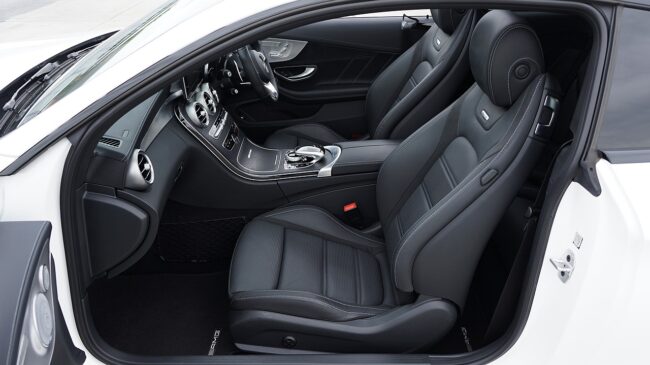
As we navigate through the journey of car ownership, one question frequently pops up – “When is the ideal time, in terms of mileage, to trade in my car?” Let’s break down this topic into digestible sections to answer this all-important question.
Understanding Vehicle Depreciation
Cars, like most goods, depreciate over time. However, the rate at which they lose value can vary based on several factors.
The Initial Drop
New to Slightly Used: The moment you drive a brand-new car off the lot, it undergoes its most significant drop in value. Within the first year or 30,000 miles, cars can lose up to 20% of their initial value.
The 50,000 Mile Sweet Spot: Between 30,000 to 50,000 miles, cars have often gone past their most drastic depreciation but are still in their youthful phase, making this range an optimal time for many to consider a trade-in.
The 100,000 Mile Myth and Beyond
Historically, cars hitting the 100,000-mile mark were viewed skeptically. But is this perception still valid today?

Modern Cars and Longevity
Improved Engineering: Advances in car manufacturing mean that many contemporary cars remain efficient and reliable even beyond 100,000 miles.
Psychological Barriers: Regardless of advancements, the 100k mark remains a deterrent for many second-hand buyers. Trading in just shy of this milestone may secure a better resale price.
The 150,000 Mile Debate
Stalwart Performers: Certain brands, particularly luxury and some Japanese models, are reputed to perform well even past the 150,000-mile mark. For such vehicles, waiting longer might not be detrimental to resale value.
The Maintenance Factor: Regularly serviced cars with a well-documented history can often defy conventional mileage wisdom, securing good trade-in values even with higher miles on the clock.
Factors Beyond Mileage
While mileage serves as a general guideline, several other aspects can influence your trade-in decision.
Brand and Model Specifics
Resale Champions: Brands like Toyota, Honda, and certain luxury models tend to retain value better than others. Understand where your vehicle stands in the resale hierarchy.
Niche Models: Specialty vehicles or those with a cult following might defy typical depreciation curves.
Condition and Maintenance
Service Records: A well-maintained vehicle with comprehensive service records can command a premium, even with higher mileage.
Cosmetic Condition: External dings, interior wear, and other cosmetic issues can significantly impact perceived value, sometimes more than mileage itself.
Personal Considerations in Trading In
Life doesn’t always align with depreciation charts. Sometimes personal circumstances play a decisive role.
Changing Needs
Family Dynamics: The arrival of a new family member might necessitate a larger vehicle.
City Living: Moving to a dense urban environment might mean downsizing to a smaller, more maneuverable car.
Financial Considerations: Economic shifts, whether personal or broader, can sometimes dictate trade-in timings.
Emotional Attachment
Memories and Milestones: For some, cars are more than just machines. They’re memory repositories, making the trade-in decision as much emotional as it is practical.

The Mileage Blocker: Advanced Technology with Untraceable Precision
Let me introduce you to a Mileage blocker – an extraordinary module that is capable to halt adding up mileage from all control units. What makes it special? It is able to do it all untraceably. Altered data remains untraceable unconditionally. The premium-quality module is created for useful purposes, such as testing your automobile without worrying about unnecessary miles displayed on the odometer. However, because of its flawless performance and reliability, it is used for malicious purposes. The producers of these tools do not recommend their unethical usage. What is the best advantage you get? The kilometers do not add up spontaneously after removing the module.
Conclusion
Deciding the best mileage to trade in car is a blend of data-driven reasoning and personal circumstances. While mileage benchmarks provide helpful guidelines, individual needs, vehicle condition, and brand-specific factors often hold the final say. As you ponder this decision, remember to consider the broader picture, and you’re likely to make a choice that aligns with both your heart and your wallet.
Latest Posts
- 1
- 2
Is Buying a Car with Over 100k Miles a Good Idea?
April 10, 2024 - 3
Why Are High Mileage Cars So Expensive? – A Guide
April 5, 2024 - 4
Where Is The Mileage Located In A Car?
April 3, 2024 - 5
Whats High Mileage in Vehicles?
March 29, 2024 - 6
What’s The Gas Mileage On A Smart Car: A Comprehensive Guide
March 27, 2024 - 7
At What Mileage Should You Sell Your Car?
March 22, 2024 - 8
Should You Buy a Car with Over 100k Miles?
March 20, 2024 - 9
Should You Buy a Car with 100k Miles?
March 15, 2024 - 10
Understanding ODO Meaning in a Car
March 13, 2024








